Credits
-
Pou Auaha / Creative Directors
Brigid Alkema, Alex Metson, Julia Ferrier, Emily Beautrais, Matt Von Trott -
Pou Rautaki / Strategic Lead
Jake Firman
-
Ringatoi Matua / Design Directors
Matt Von Trott, Brigid Alkema, Julia Ferrier -
Kaituhi Matua / Copywriter Leads
Alex Metson, Emily Beautrais
-
Ngā Kaimahi / Team Members
Brigid Alkema, Alex Metson, Emily Beautrais, Julia Ferrier, Matt Von Trott, Matthew Wilson, Jane Oak, Christina Hazard, Carne Godfrey , Liss Neustroski, Emma Brown, Tylah Kiriona-McKenzie, Mike Gwyther, Leon Baldock -
Kaitautoko / Contributors
Jamie Lawrence , Claire Kelly, Cam Ballantyne, Steve Boniface, OMD Wellington
-
Client
Ministry of Social Development
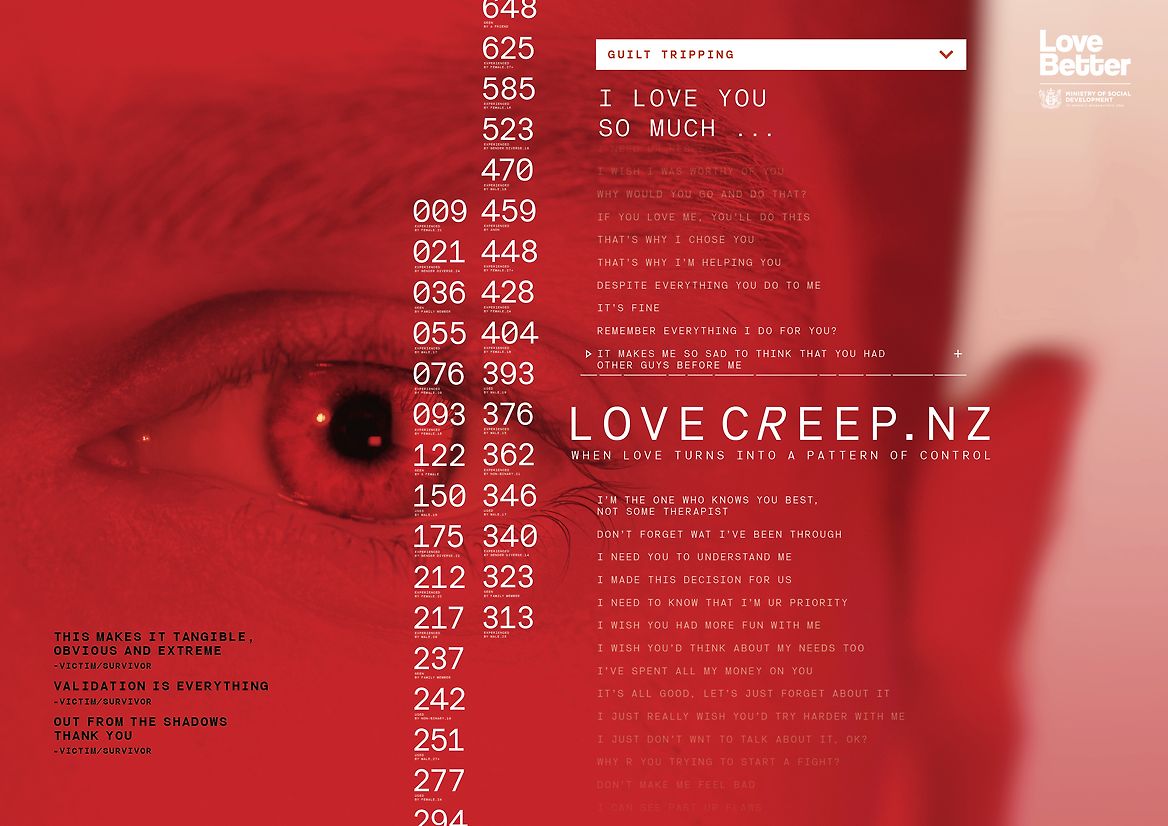

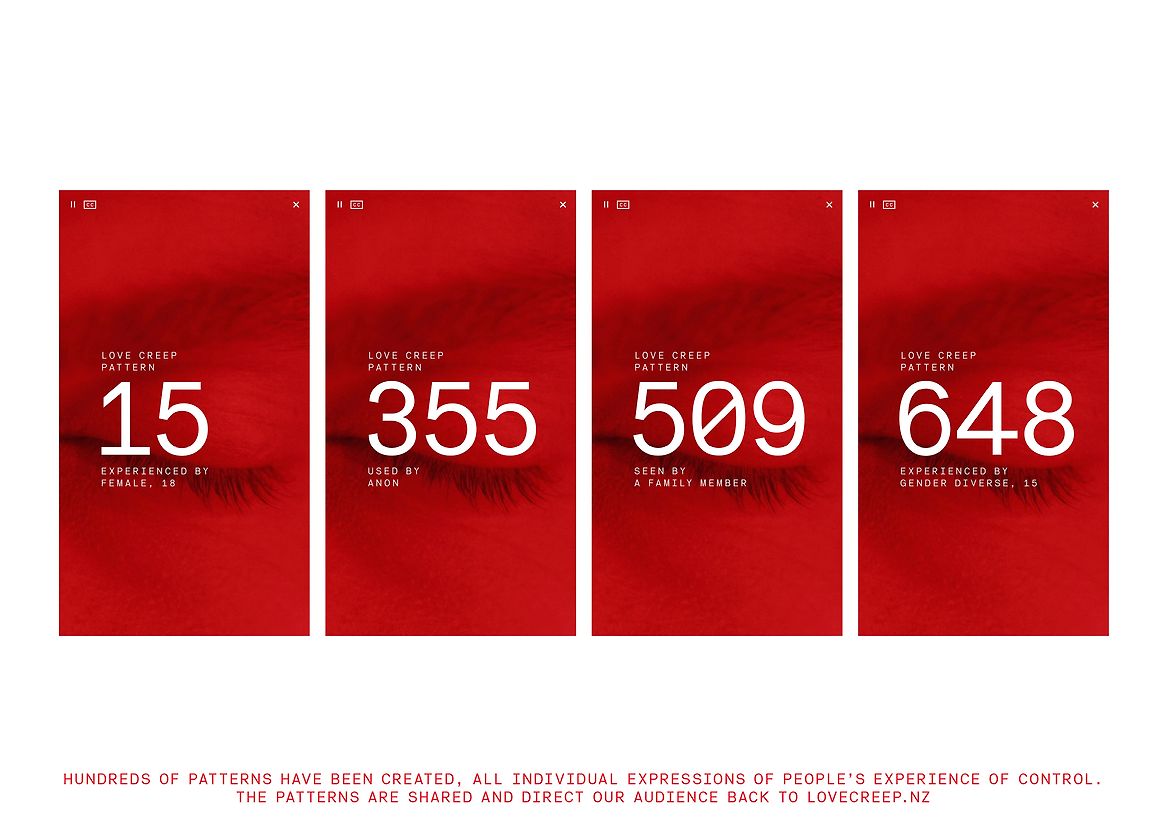
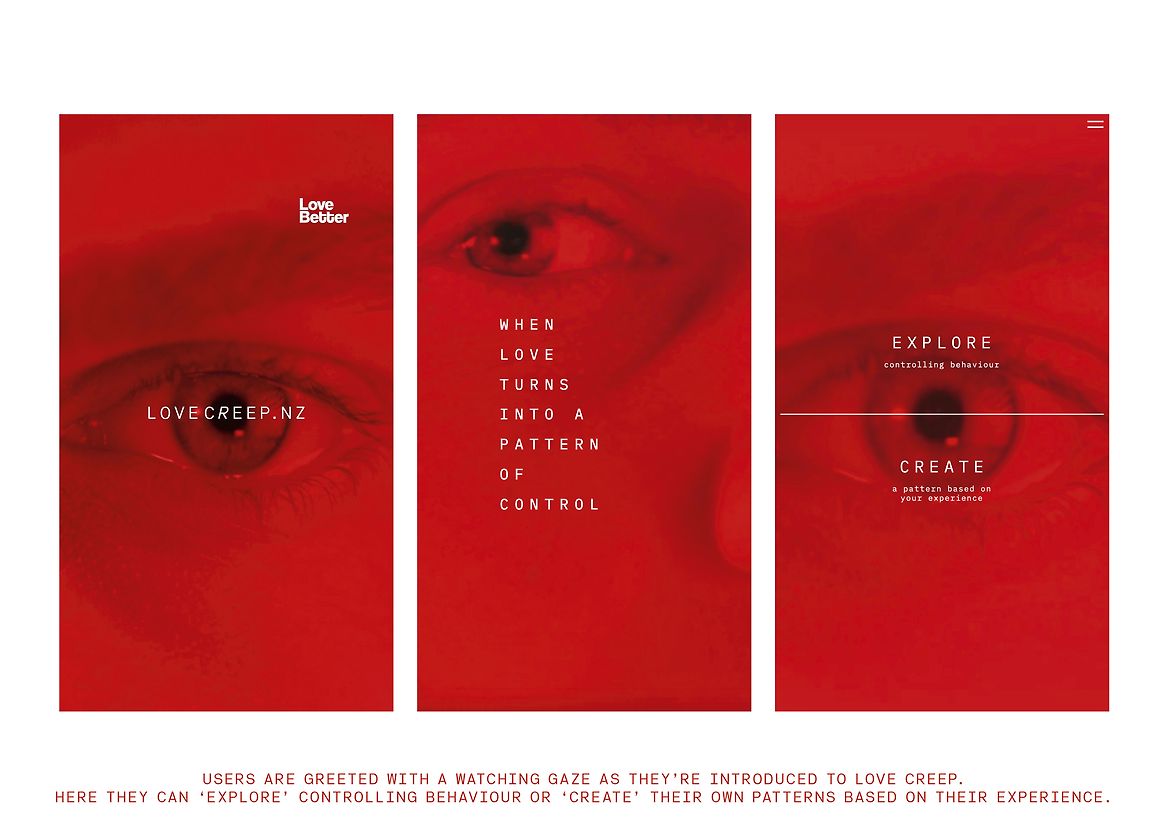

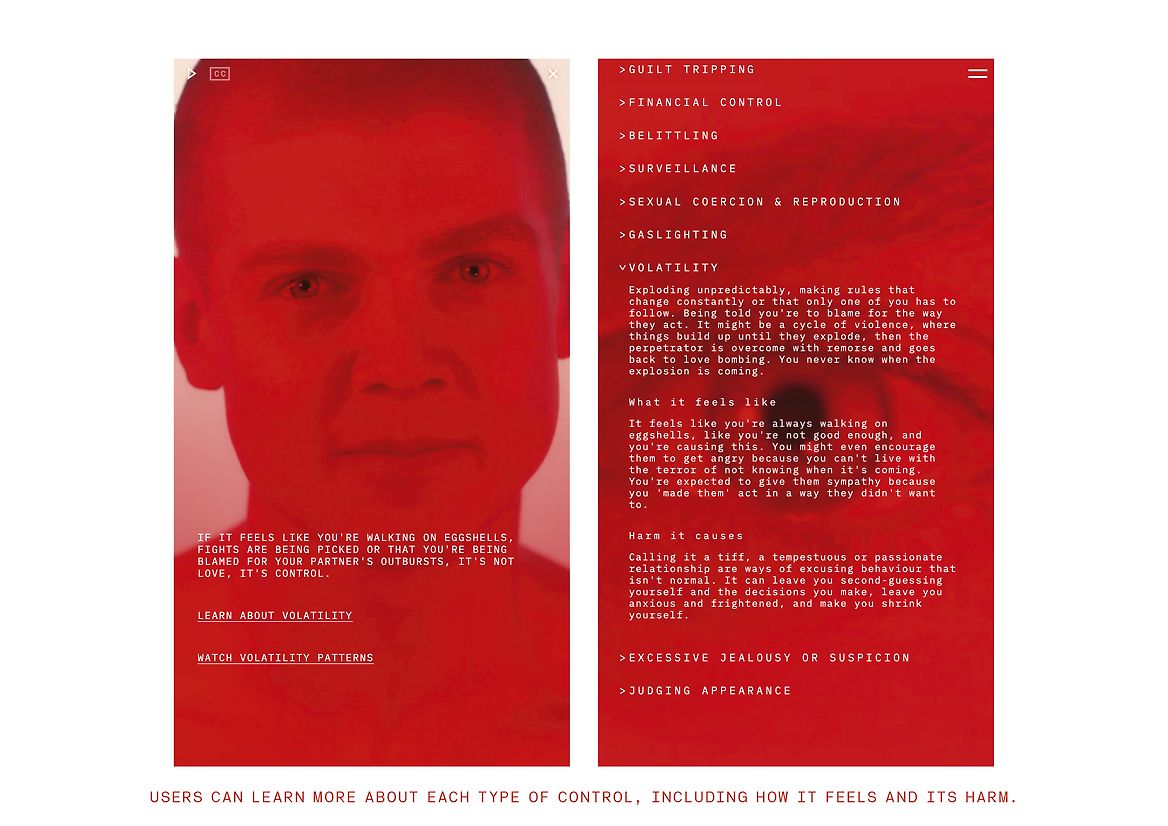
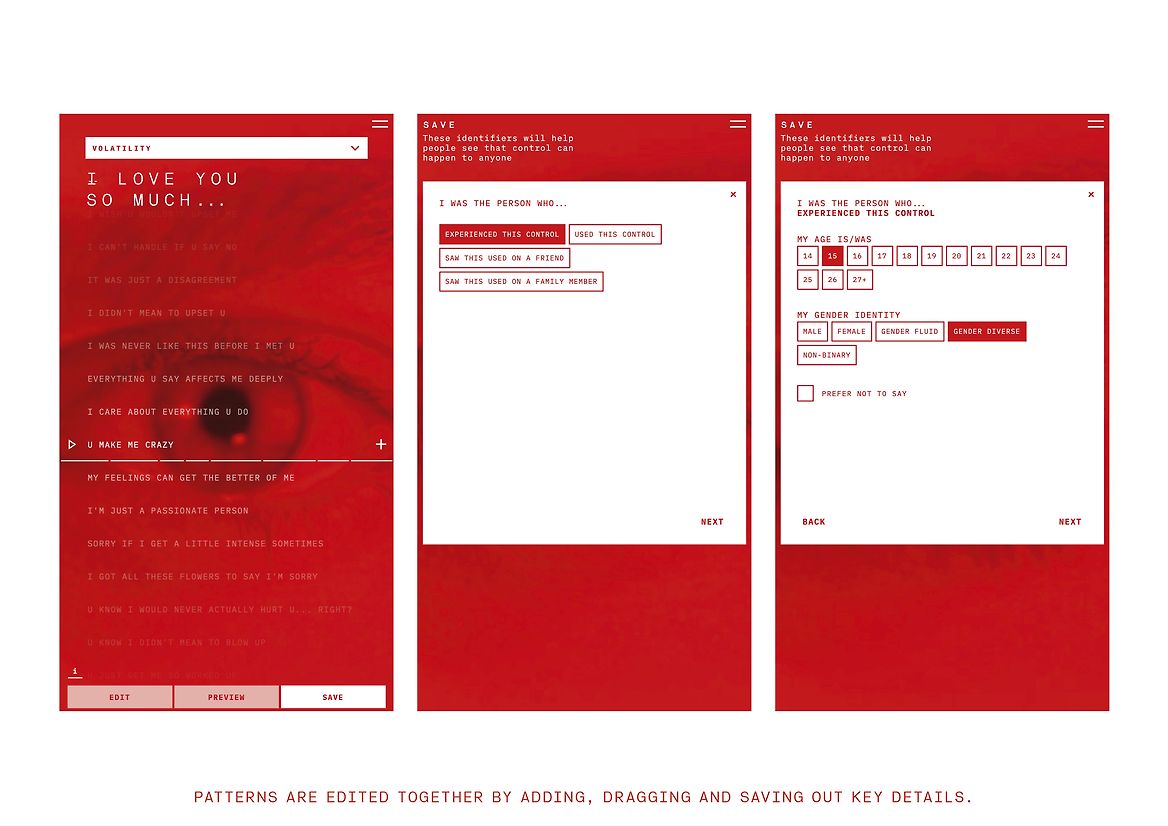
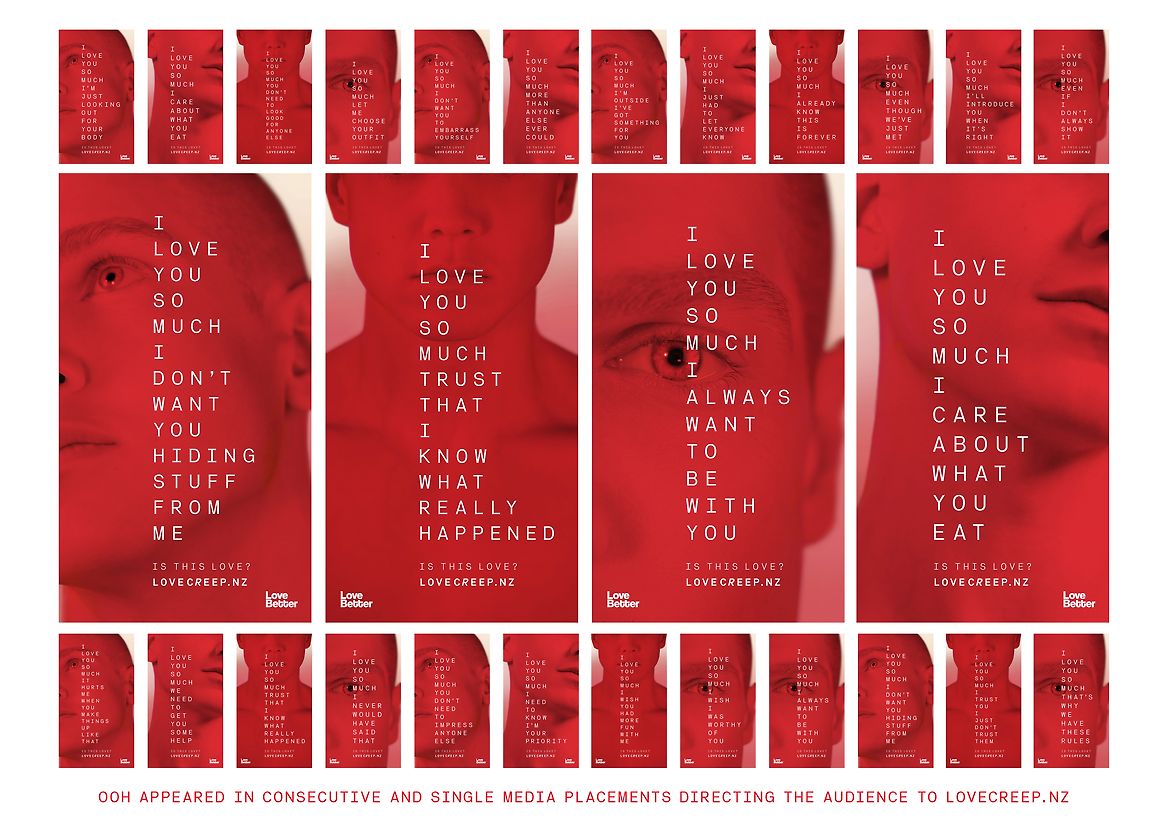
Description:
Cultural Context
New Zealand has the highest rate of domestic violence in the OECD – 1 in 3 women will experience abuse in their lifetime. LoveCreep.nz is a project by Love Better. The Love Better programme, set up by the Ministry of Social Development, is designed to help young people navigate sex and relationships to reduce harm now and into the future.
Problem
Coercive control is on the rise in young relationships. Left unchecked, it’s a key predictor of intimate partner violence. The lack of clarity around healthy relationships means young people question their own belief in what is ‘normal’. They don’t have the tools to adequately describe or identify controlling experiences. This leaves them unsure of how to reach out for help.
Strategy and Idea
Coercive control has the perception of being intentional ‘bad’ boundary-crossing behaviour. The reality is this is all tied up in the messiness of love. For young people experiencing the excitement of love, harm seems far away. The problem is there’s no hard line – love can creep into control and the boundary can be blurry.
Each film depicts a story of someone’s real experience of coercive control. Built from interviews with victim/survivors, the films cover 13 different types of controlling behaviour.
Launching with a total of 25 films, each victim/survivor’s unique experience is brought to life by our character, with patterns that reveal their experience of abuse and control.
The films provide validation for those who have experienced controlling behaviour and ask the audience to reflect on the question: 'Is this love? Or is it something else?’
The films drive our audience to LoveCreep.nz – a digital experience that simulates coercive control. Here young people can learn how to spot control, seek advice, and create their own patterns of control based on what they may have experienced. These patterns are pushed out to direct new people back in.
Execution and Design
The art direction is inspired by brutalism, an architectural style that emerged in the mid-20th century, characterised by its functional, often austere aesthetic, creating an uninviting tone. A commitment to being reductive on the design journey created intentional discomfort. This process stripped away ‘love’ to reveal the brutal nature of control. The red palette signals both love and danger. The font is functional. The compositions are clipped, as are the edits.
The red colour wash was lit and shot in-camera, with the talent stripped bare – removing any personality through clothing and hairstyle. And the only sound heard is a repetitive industrial-like alarm to signal the start of Love Creep.
Results
LoveCreep.nz has already seen shifts in behaviour amongst our audience.
• +5% in young people being able to confidently identify controlling behaviour
• -5% in saying they’re experiencing control in their relationships
• Youthline has seen an increase in callers asking whether their behaviour is controlling or not
• LoveCreep.nz is now being introduced into New Zealand high schools.